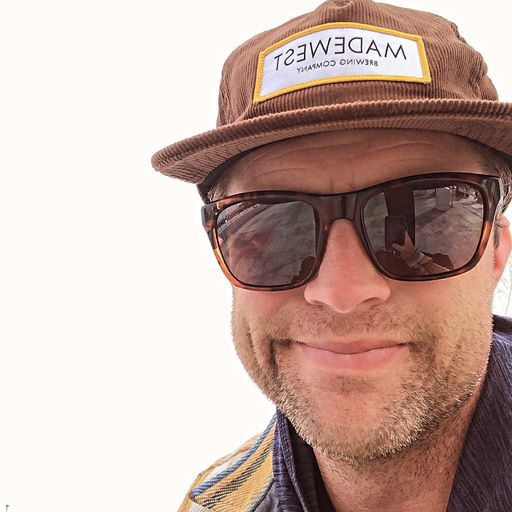
Categories:
Speaking your target audience’s language.
Here’s the scene: You’re scrolling online and suddenly an ad pops up that sounds just like something you would say. You might notice. You might not. But your subconscious? Well, our brains process information based on several factors including our background and familiarity with information—scientists call this “processing fluency.” When an ad uses words and phrases that match how we naturally speak, our brains basically give it a high five and say, “Hey, I like this one!”
Another way to think about how the “voice” used in advertising affects us is to imagine your brain as that friend who can’t decide where to eat dinner. Part of it wants to make logical decisions (that’s your prefrontal cortex being all responsible), while another part is screaming “BUT HOW DOES IT MAKE ME FEEL?” (hello, limbic system!). Good advertising speaks to both parts of your brain (a logical message being delivered in a way that makes you feel comfortable), kind of like being the diplomat at a neural dinner party.
And what’s a party without friends? The “Social Identity Theory” tells us that we humans love to hang out with our own. When an ad feels like it’s coming from one of us, we’re more likely to trust it.
Ok, that was a lot. And we’re just beginning! Let’s take a closer look at why good advertising should always speak the language of its target audience—and how to make that happen.
The Cheat Sheet
We know you’re busy—so we’ll just give you the TLDR right upfront.
Here’s what we’re going to cover:
- Find out who your audience actually is
- Do your homework on how they actually speak, not how you think they speak
- Figure out what keeps them up at night (besides that last coffee at 4 PM)
- Match your message to their communication style
- Speak their language but keep it authentic—people can smell a fake from a mile away
*Misguided brands trying to speak to Gen Z and Gen Alpha*
Find Out Who Your Audience Is
In order to speak the language of your target audience, first you need to know who they are. Creating personas is a great way to start getting to know your audience. A persona is a fictional representation of a typical customer—basically creating someone based off of key identifiers. At Ethos, we even name our personas and build out an image and lifestyle for them.
Personas are typically built based on target audience data, things like:
- Age
- Location
- Gender identification
- Job title
- Industry
- Education level
- Household income
- Interests
- Hobbies
- Social media preferences
Of course, everything about your persona won’t be true for every customer. The idea is to create the embodiment of a generalization. You can start creating personas based on what you THINK you know about your audience—but the best personas are built based on research designed to uncover actual data about how audiences tend to think and behave. Once we understand this, we can start creating ads that resonate with our specific audience—ads that speak their language.
Liquid Death knows exactly who they’re talking to with their brand, packaging and advertising—young adults, especially millennials and Gen Zers, who value authenticity, individuality, and rebellion. Their audience also identifies with alternative subcultures like live music, snowboarding, and skateboarding. You could call a persona of theirs Full Send Phil (we like alliteration, haha).
Speaking Their Language: How to Find Their Voice
Now that you know who your target audience is, how do you figure out their distinct voice? This is where social media can be unbelievably helpful. You can gain an incredible amount of information just by checking in to groups and pages that fit the interests and demographics of your audience. Not sure where to start? Here are a few ideas:
- Subreddits—Reddit is like a big party where lots of smaller conversations are happening under one roof. By going into smaller subreddits (think skiing, for those who ski) you can tap into the specific vocabulary and voice of those you want to connect with. For instance, just found out what knuckle hucking is, thanks to that subreddit.
- Facebook Groups—these can be pretty great places to mine lingo, and especially fertile ground for slightly older audiences.
- Instagram Reels and Stories—a few minutes of scrolling a day can offer you plenty of content examples, full of what to say and how to deliver the words.
Words Matter
Once you have an idea of who your target audience is and how they speak, you can start writing in their voice. And with that voice comes grammar and word choices. It can be the difference between using contractions (informal) or not. Would this brand say something is “rad”? Or is that totally cringe? How does the word “wonderful” fit in? Only by knowing your audience (and yourself!) will you know if something feels right. And about that little parenthetical—don’t try to make your brand something they aren’t—you want to be relatable to your target audience, but you don’t have to try to BE them if that isn’t true to your brand.
Let’s look at two good examples, on opposite sides of the spectrum.
Rolls Royce would not be caught dead using a contraction.
While Spotify? It’s kinda their point.
One way we at E|V think of this is by asking, “If your product or organization were a well-known person, who would they be?” Taking on that persona can be a great exercise in unlocking your authentic brand voice.
Making It Work (Without Looking Like You’re Trying Too Hard)
In the end, the secret to great advertising isn’t really a secret at all—it’s a combination of art and science. Research helps us understand our audience. Once we understand them, we can learn to speak their language. And when we speak their language, they’re more likely to pay attention. So go be curious. Listen and see how your audience talks. We think you’ll like the response.
About Ethos
Ethos is a multiplatform branding agency that develops and executes integrated marketing campaigns across multiple channels for companies inside and outside of Maine. At Ethos, we believe that the most effective way to set a company’s marketing course is by finding its core truth – its ethos. We know that once we discover and communicate that core truth, we can truly make a difference for each client’s unique marketing and business objectives. With Ethos, you get more than a marketing agency. You get a long-term partner whose goals are your goals. Learn more about the Ethos approach and the work we’ve done for our clients. Want to have a conversation about your brand’s core truth? Contact us today!


